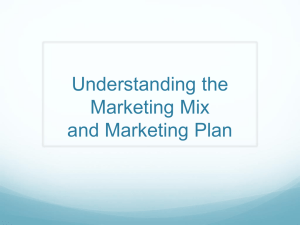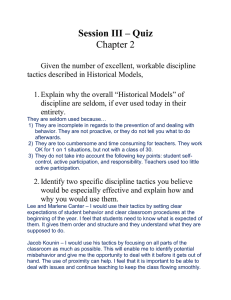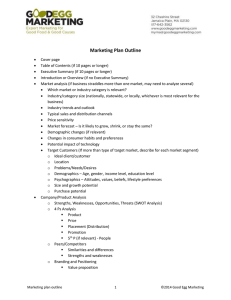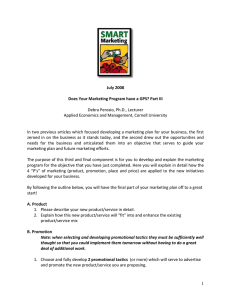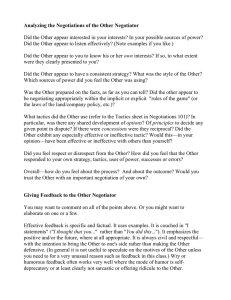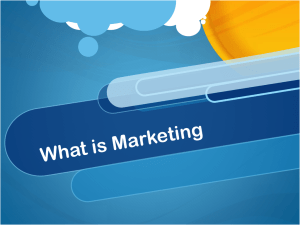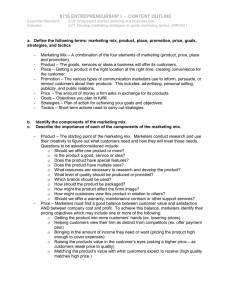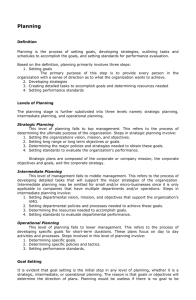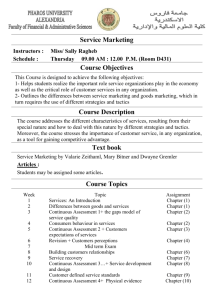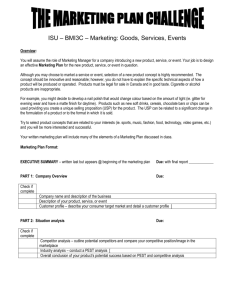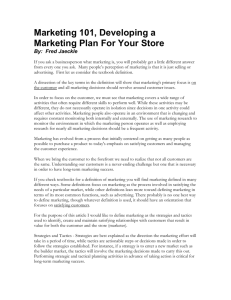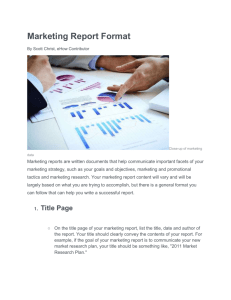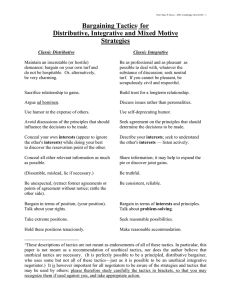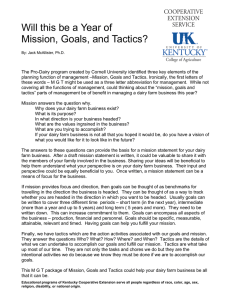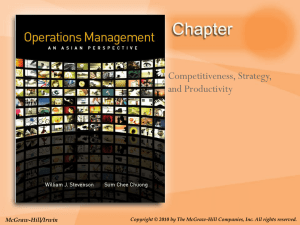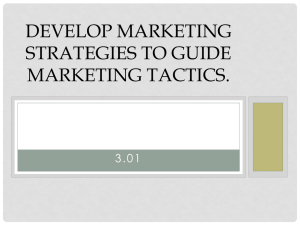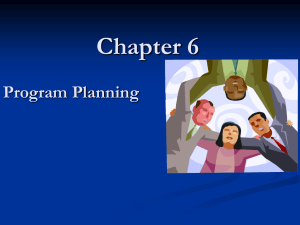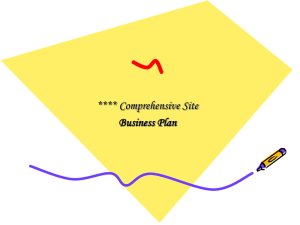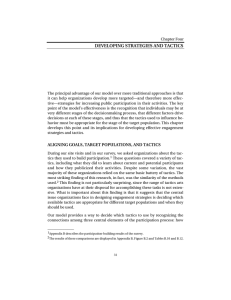Indicator 1.02 * Employ marketing information to develop a
advertisement
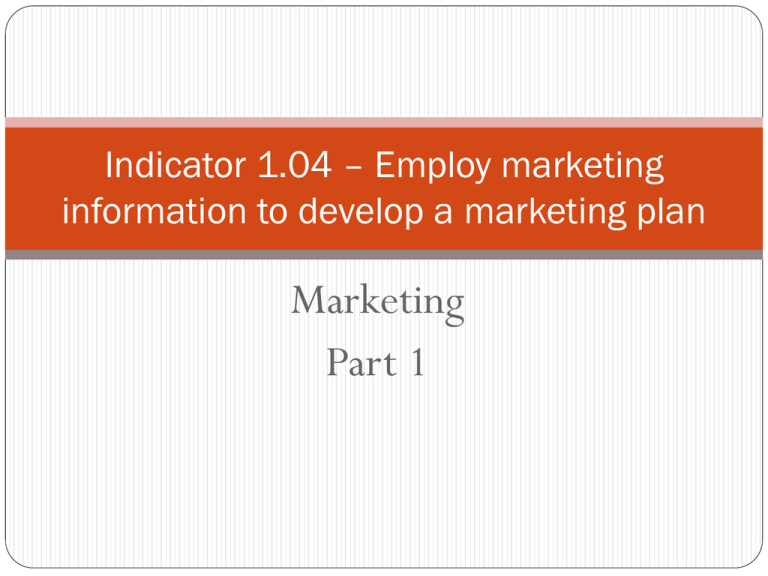
Indicator 1.04 – Employ marketing information to develop a marketing plan Marketing Part 1 THE MARKETING MIX Includes four basic strategies called the 4 P’s or elements of marketing. For each strategy, decisions have to be made for each product the business offers to best reach their target market. Product Place Price Promotion The 4 P’s Product - decisions include what to make or obtain as the business’s product mix. Level of quality, features, branding, packaging, service, and warranty are items to decide and develop for each product. PRODUCT Examples: Product: the goods, services, or ideas a business will offer its customers. Marketers conduct research and use their creativity to figure out what customers need and how they will meet those needs The 4 P’s Place - decisions include where the customer can obtain the products. Many businesses utilize multiple channels of distribution. For example, store locations, website, and catalogs are the standard for most retailers today. Decisions of direct distribution or indirect distribution (intermediaries/middlemen) must be made. PLACE Example: The place element can make or break the buying experience. Getting a product in the right place at the right time is all about creating convenience for the customer. The 4 P’s Price - decisions include determining what a customer is willing to pay What competition is charging, determining seasonal discounts and allowances, and credit terms. Determine how to accept payment: Cash, debit, credit, check, or combination PRICE Example: Price is the amount of money a firm asks in exchange for its products. To be successful, a good balance between customer value and satisfaction, as well as company cost and profit must be found. The 4 P’s Promotion - decisions include the promotional mix (advertising, sales promotion, selling, and publicity) These decisions are based on the budget a business sets for the promotional mix. The ultimate goal of promotion is to generate a positive response from customers. PROMOTION Example: Promotion refers to the various types of communication that marketers use to inform, persuade, or remind customers about their products. Advertising Personal selling Publicity Public relations Sales promotion IMPORTANCE OF THE 4 P’S Product is important to obtain or develop the best product mix within your market and your target market. Place is important because it is the avenues you come into contact with your customers. This is the element that has direct impact on loyalty and repeat customers. Price is important because it establishes your profit and set the quality level of your products/services. Promotion is important because it communicates with your customers so they know about your product mix. ACTIVITY Choose a product that you use frequently (toiletry items are good). List suggestions for improvements to the product and the marketing mix. Explain how the improvements would increase satisfaction of the customer and the business. RELATIONSHIP OF GOALS, TACTICS, & STRATEGIES TO THE MARKETING MIX Mission Statement – the guiding principle for all business decisions and provides direction for planning. Goals/Objectives – established on a yearly basis and support the mission statement. Goals must be measurable and have a deadline. Strategies – are then developed to accomplish goals and it reflects the method to achieve the goal (what to do). Tactics – are then developed to accomplish the strategies; it is the how things will be done, daily actions. Goal: What is the marketer’s destination? A goal is an objective you plan to fulfill SMART:(Specific, Measureable, Action, Realistic, Timebound) Determine where your firm needs to be by a particular date and agree upon goals A family-style restaurant wants to increase sales Agree to increase annual sales by 10% over last years sales Goal is specific and can be evaluated for success or failure at the end of a given time frame. Strategy: Which route will the marketer take to get there? A strategy is a plan of action for achieving your goals and objectives. Create the plan of action (route) believed to be most efficient. Example: Strategy #1: add a kids’ menu in order to increase sales to young parents in the area Tactics: What small steps are needed to make it happen? Tactics are specific actions used to carry out strategies Marketers carefully choose the short-term actions, or tactics, they use to carry out their strategy. Tactics must line up with where they plan to go –their goaland how they plan to get there They pay attention to every detail – their strategy MARKETING STRATEGIES CHANGE…… What factors cause that change? Different Goals Economic conditions change Political or influence of governmental agencies changes Demand changes reflecting new consumer attitudes Environmental changes Advancements in technology Actions of Competitors ACTIVITY Think of 5 products that have “changed” in your lifetime How did they change? Why did they change?

